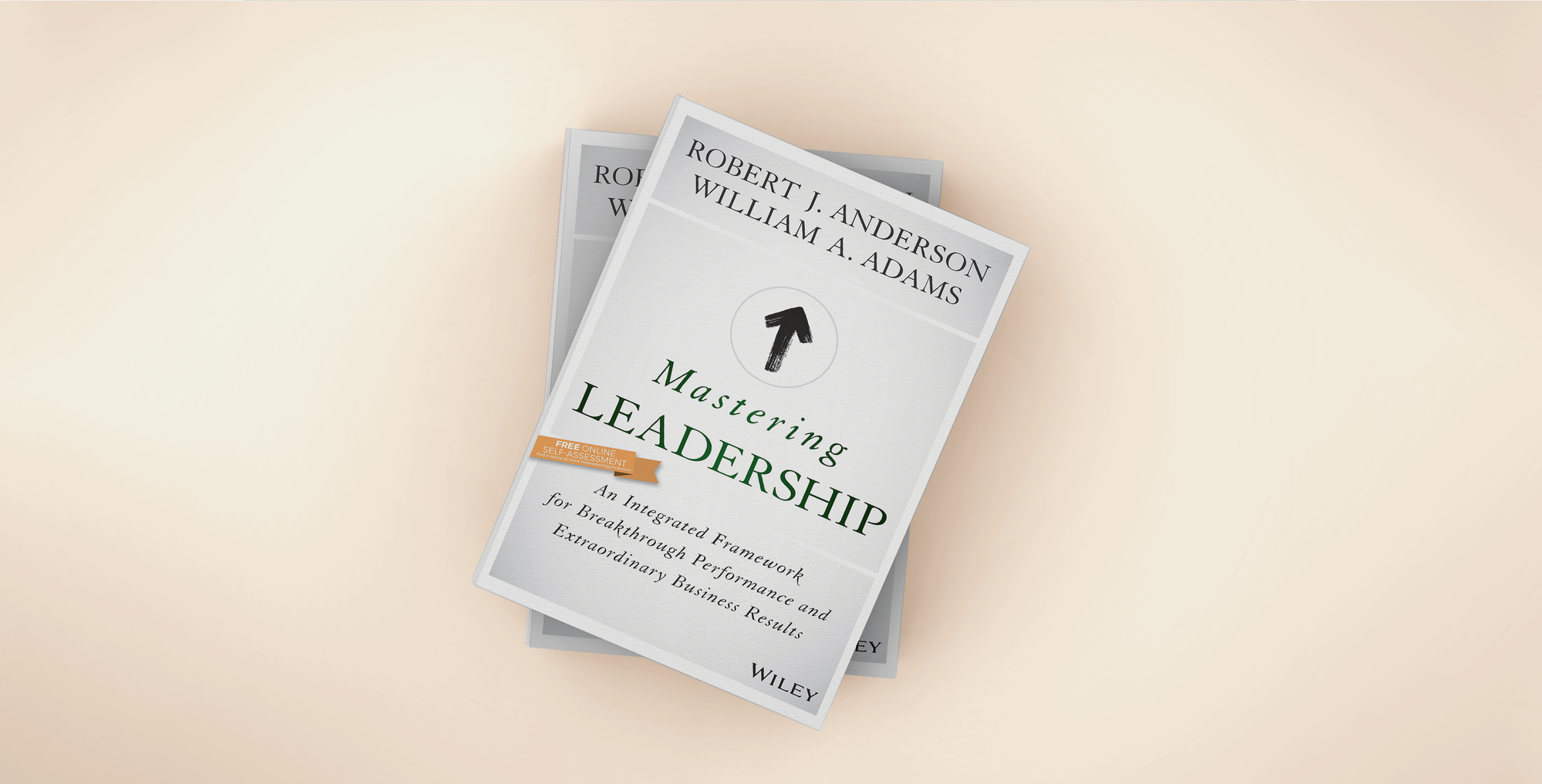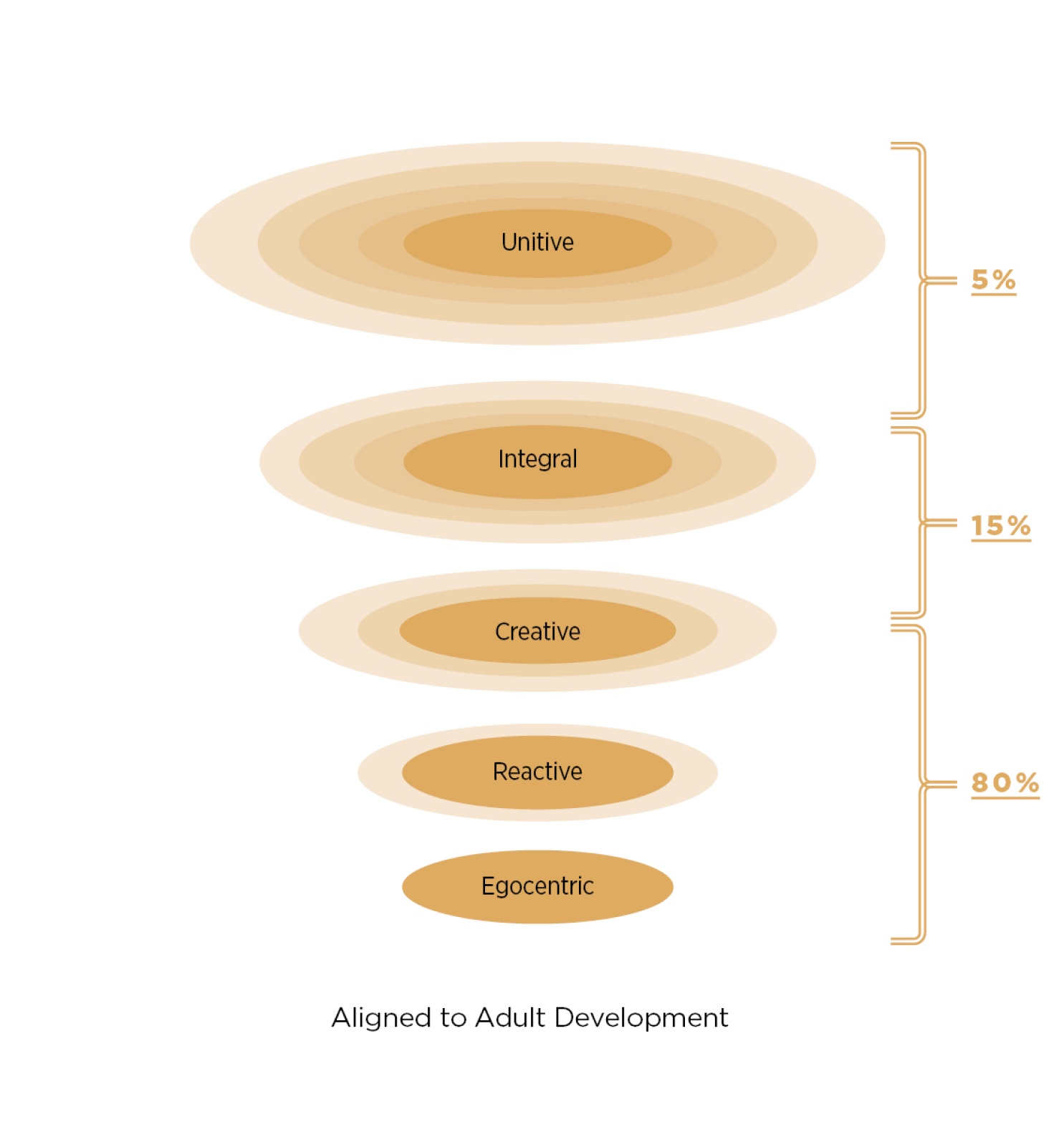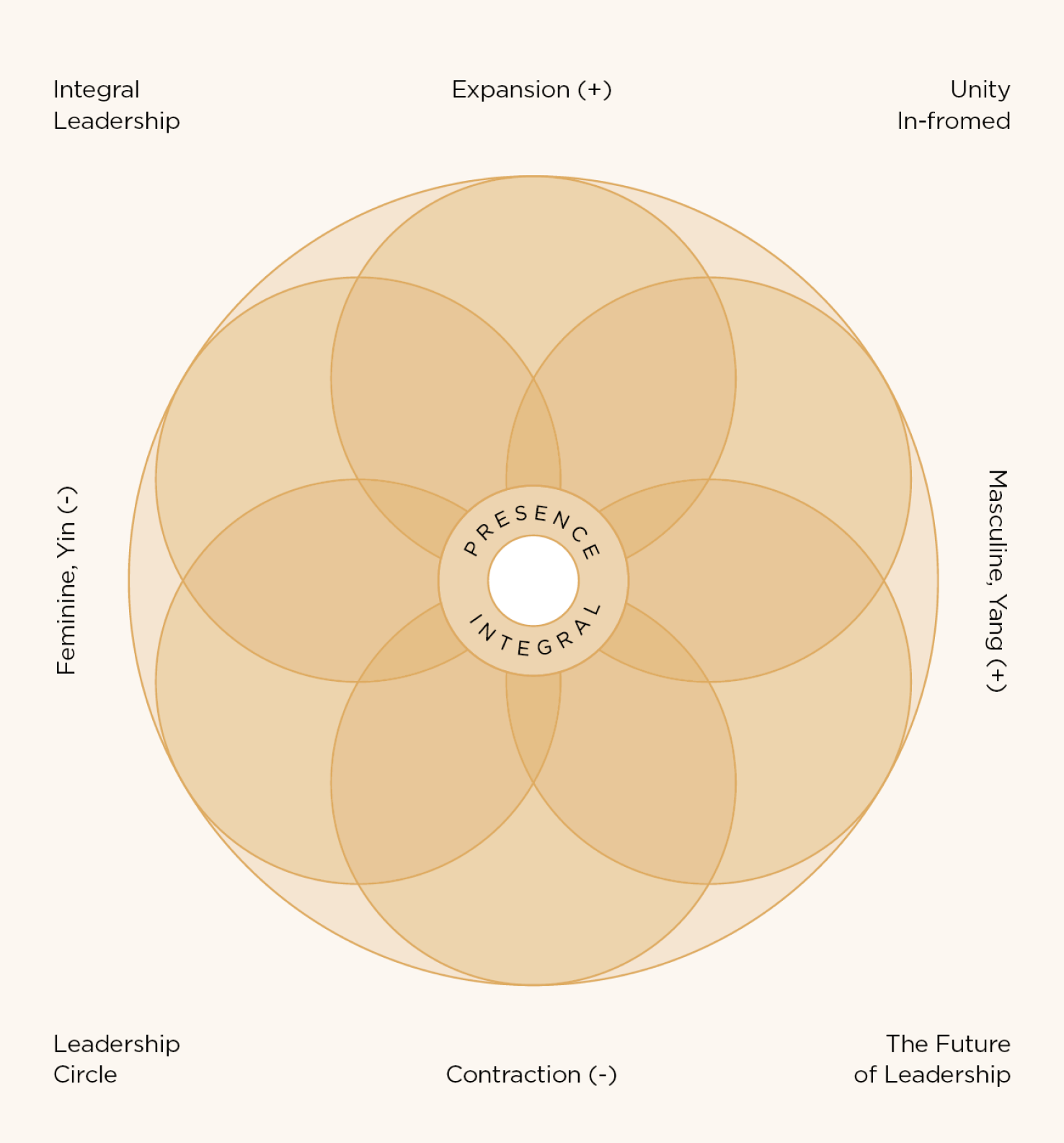“At this most pivotal moment in human history, the challenge leaders face is way beyond VUCA. The challenge for leaders today is to righten civilization, to literally re-invent society from the ground up; from zero point; from first principle—Unity. The current order is imploding. It no longer works. We know that going back to normal is a catastrophe. Leadership is now compelled to take responsibility for the welfare of the whole planet. Integral Leadership is required"
The world has become exponentially more complex. Our organizations are stretched and strained by the complex forces emerging on all fronts. Covid persists. As office space reopens, employees are choosing to work from home. Talent acquisition and retention is challenging with “The Great Resignation.” Global supply chains are severely constrained, and inflation is rearing its ugly head. In the leadership vernacular, VUCA (Volatility, Uncertainty, Complexity, Ambiguity), has been augmented by BANI (Brittle, Anxious, Non-linear, and Incomprehensible).
And if that were not enough, at the time of this writing, climate scientists have published the direst report yet, and Russia is waging a brutal war on Ukraine. The foundations of our current order of civilization are shaking—if not imploding. Back to normal is not an option. It is a death sentence. This moment in planetary history calls us to create a new, higher order of society.
Our future depends on how we rise to this moment. The leadership challenge before us is not merely managing through turbulent times. We are challenged with rightening civilization. As leaders, we must navigate VUCA/BANI and, as we do, position our organizations to contribute to a new and thriving planetary future. This puts an unprecedented demand on the accelerated development of highly conscious and effective leaders at every level of the organization.
| LEVELS OF LEADERSHIP
All of us develop through a series of sequential stages of adult development that are universal and invariant. With each developmental stage, leadership can be more effective amid greater complexity. To ignore this reality is to jeopardize our efforts to transform organizations and develop effective leaders. No organization can organize at a higher level of performance than the consciousness of its leadership. Deep systemic change occurs only if we can become the change we want to see. As one senior leader put it, “How did we think we could transform this organization without being transformed ourselves?”
We identify from the research five levels of leadership—Egocentric, Reactive, Creative, Integral, and Unitive. Each progressive level is associated with greater consciousness and effectiveness. Each result in more engaging organizational cultures, accelerated innovation, increased business performance, and enhanced capability to lead systemic transformation. As a critical mass of leaders within the organization develop to the next level, a tipping point is reached, enabling the whole system to move into and sustain a leap from one level of performance and contribution to the next.

Mastering Leadership
For most leaders today, complexity is outpacing their personal and collective development. Most leaders are in over their heads...
In this paper we will overview the first three levels of leadership. We will then focus more extensively on the forth level which we call Integral. For a more in-depth treatment of these levels, we refer you to our book, Mastering Leadership.

The first three levels of leadership are:
1 Egocentric.
The Egocentric stage of development is adolescence. At this stage, we are all about meeting our needs. We do not usually notice others (often-competing) needs. Our needs are primary. We are islands onto ourselves, and we relate to others primarily to get our needs met. Societies rules and values do not apply because we think we operate with impunity. Growth at this phase is taking other’s (and society’s) needs, values, feelings, and expectations into account. It requires defining ourselves co-relationally, such that our primary loyalty is no longer to ourselves, but to the relationship (friend, parent, family, organization, community, and society).
Leaders who do not fully make this transition (about 5%) and continue to operate at an Egocentric level tend to be highly autocratic and controlling, dictatorial, and oppressive. Think, “my way or the highway.” They create a political climate that requires unwavering loyalty and obedience to the leader (or else). Egocentric mindset in adolescence is normal. In adulthood, in leadership, it is destructive.
2 Reactive.
The ability to hold both our needs and the needs/feelings of others simultaneously is the hallmark of the Reactive level. This adult stage of development Bob Kegan* calls Socialized. We move out of adolescence and take on the external demands and expectations of society. We learn societal rules and play by them to meet the expectations of others and our organizations. We become good citizens. As such, we are socialized—living and leading from our conditioning—from the expectations of those in our past and our current environment. Much of this conditioned thinking and behavior is automatic as we are not conscious of the internal messages that run us. Therefore, we are more authored by other’s expectations than by ourselves; more other-authored than self-authored; and more authored from the outside in than from the inside out.
At this stage we dive into our chosen professions and work hard on honing our outer game. We gain the domain knowledge and competence required to succeed in a chosen field. We create businesses, careers, climb ladders, get married, have families, and establish ourselves in society.
All of this forms the basis of our sense of self-esteem and identity. Consequently, more than we are aware, we are constantly leading from an unexamined fear of loss, of not being enough, of losing credibility or approval. We work at forwarding our objectives by unconsciously playing not to lose. Not to live up to the expectations of those around us, and especially above us, risks our future and, thereby, our sense of self, self-esteem, identity.
Leaders at this level of development (about 70%), when playing not to lose, can become overly controlling, arrogant, emotionally distant, protected and/or risk averse. This can lead to organizational cultures that are underperforming and disengaging. However, leaders at a more mature Reactive level often care deeply about their employees and manage as benevolent parents or patriarchs/matriarchs. The organization is ordered and efficient. It is competency driven and mechanistic. Employee input is solicited, but decision-making and creative expression is still vested with top leaders. Leadership is often humane but lacks the capability of broadly sharing power. People are informed, but not involved in decision-making. People feel supported financially and treated fairly, but most are not expected to be involved in important decisions. The institutional style that emerges with Reactive leadership is a large—efficient hierarchy—an ordered and layered bureaucracy. Its political climate requires loyalty and obedience, not so much to the leader (as in Egocentrically led organizations), but to the organization.
This level of leadership, as well as the kind of organizational cultures and structures that it creates, are outmatched in today’s complex business environment. As such, we are challenged to grow beyond them.
3 Creative.
Most organizational transformation efforts are attempts to establish a Creative culture that is flatter, leaner, more agile, and require higher levels of ownership, creative engagement, and involvement by employees at all levels. Such change efforts can only succeed if the leadership is functioning at the Creative level or beyond. These change efforts fail otherwise.
At the Creative stage of development, we start to see the socialized, habitual ways of thinking— that have served us well until this point—are now reaching operational limits. They are not mature enough for today’s complexity of life and leadership. We realize that our future and self-esteem are not determined by others. We see how we have created assumptions that link our self-worth to being seen as right, successful, in control, brilliant, acceptable, safe, conventional, etc. We reflect on and upgrade many of the assumptions that keep us operating from fear—in a play-not-to-lose game. In doing so we keep the strengths we have been running reactively and shed the liability of running them through an externally validated structure of identity. As we do so, we evolve an authentic version of ourselves. Bob Kegan calls this stage “Self-Authoring” because we are now internally authoring our sense of self and our future. Consequently, we are more authored by self than by others.
"As new possibilities open, we become visionary leaders. We begin to orient our life and leadership more on our sense of personal purpose and vision. We orient our leadership on creating organizations we believe in. We are now playing on purpose"
At this stage we listen to the unique call of the soul. We ask new questions. Who am I? What do I care most about? What do I want to contribute with this one very precious life? For what do I choose to stand? What is the life I came here to live? How do I live that life and not someone else’s? How can I make my life and leadership a creative expression of what matters most?
As new possibilities open, we become visionary leaders. We begin to orient our life and leadership more on our sense of personal purpose and vision. We orient our leadership on creating organizations we believe in. We are now playing on purpose.
Fully mature Creative Leaders (about 15%), institute lean, innovative, visionary, creative, agile, diverse, high-involvement, and high-fulfillment organizations. They focus is on high performance through teamwork and self-development. Leadership is shared. Creative leaders take responsibility for co-authoring the organization’s vision, enrolling others in that vision, and helping them discover how the vision enables them to fulfill their personal purposes collectively.
The current level of complexity combined with the urgent need to righten society for a sustainable and thriving future makes Creative leadership a minimum system requirement. This kind of leadership has never been more necessary. That said, we are now reaching a point in human history where this highly effective form of leadership may be reaching its limits amid the highly complex current challenges. Integral leadership is now required. There is a tipping point number of highly Creative leaders that can be challenged to move into Integral leadership, and it is imperative that they do.
"...we are now reaching a point in human history where this highly effective form of leadership may be reaching its limits amid the highly complex current challenges"

| The Future of Leadership is Unity In-Formed Integral Leadership
Integral leadership is underpinned by a very late and advanced stage of adult development from which only about 5% of adults operate. As such, they are becoming porous to the inflow of information (intuition, light, energy, grace) from the higher levels of consciousness—Unitive levels. Therefore, Integral leadership is founded on the presumption, if not the direct realization, of the inherent unity of all things. This makes for a very high form of moral, systemic, and effective leadership capable of innovating the future.
The challenges of these times put innovation at a premium. We must invent a new, higher-order future and create the breakthrough innovations that establish that future. We must do so amid VUCA/BANI. No one knows how to do this. Therefore, not only must we be individually and collectively intelligent, but we must also be ingenious. That is, we must invent new and unknown futures.
Integral leaders are those rare leaders capable of catalyzing breakthrough innovation that, not only transforms technology, products, and services, but also the economic, organizational, political, and social systems that herald a new, emergent, higher-order, sustainable, and thriving future for the planet and all living beings.
Our framework for developing Integral leaders is informed, not only by the forefront of leadership theory and practice, but by deep integration of the leading edges of physics, cosmology, biology, neurology, geometry, psychology, as well as, psychic research, shadow work, energy healing, and contemplative practice. This framework represents a new leadership paradigm capable of integrating and supporting the practices through which Integral leaders develop and lead.
Integral Leadership comprises seven interdependent elements underpinned by the leading edge of science, Thought Leadership, and Practice Leadership.

Unified Science.
The future of leadership requires a fundamentally new paradigm of reality. The paradigm from which most operate is at the root of our current global crisis and is coming to an end. The new order can only arise from a wholly new understanding of the fundamental nature of reality.
At the leading edge of science—from multiple disciplines—is emerging a Unified theory of reality that describes the universe as a quantum field of unbroken wholeness. Niels Bohr once said, “If quantum mechanics doesn’t shock you, you haven’t understood it yet.” In this reality, consciousness is fundamental—inherent and prior to the emergence of energy, matter, time, and space. The universe (and everything in it) is emerging from and in-formed by an unified, entangled, and holographic field. Everything is a field, there are no particles, everything is intelligent, and everything is completely interconnected—including “solid” matter, including you, your team, and your organization.
This emergent paradigm corresponds with what the world’s wisdom traditions have been describing for thousands of years.
Albert Einstein said:
"Concerning matter, we have been all wrong. What we have called matter is energy, whose vibration has been so lowered as to be perceptible to the senses. Matter is spirit reduced to point of visibility. There is no matter.
Everything is energy and that is all there is to it. Match the frequency of the reality you want, and you cannot help but get that reality. It can be no other way. This is not philosophy. This is physics."
Understanding the fundamentals of how reality is constructed, self-organizes, and creates, allows us access, embody, presence and enact our full potential as leaders, innovators, and creators. It encourages us to stop dismissing and step into our higher, subtle, intuitive, and super-rational abilities through which we discover, innovate, and co-create the future that wants to be born in and through us.
At the Integral level of leadership, the experience of working in and with the unified field is not something we visit occasionally as a balm to our habitual experience of separateness. Rather, it’s the foundational state from which we meet the world. Integral leaders are literate with specific energetic practices that generate frequencies within which they become available for subtle streams of intelligence, insight, and innovation.
Unity In-formed Presence.
Unity is the core presumption of Integral Leadership. Reality is an unbroken wholeness. There is only one, manifesting as many. We are all and only one. When leaders more fully understand, experience, and embody this principle, they become increasingly aware and present. A leader standing in full presence is embodying a resonance matched to the reality they want to create. This is their highest impact in any circumstance. All the elements below require the leader’s full presence and expand the leader’s capability and impact. Becoming more and more present is a central leadership practice.
We define presence as, “I am here and I am available.” (Janni, 2022)** I am here. All of me, interdependently, powerfully, vulnerably, and transparently in flow, fully available to you, to the world, and to the subtlest whispers of insight and innovation that emerge among us from the unknown.
Higher Purpose.
Creative leaders self-author their future. Integral leaders are authored by that which is larger than self. They allow their lives and their organizations to be authored by an emergent and unknown (or only dimly perceived) future. They are surrendering egoity in service of what wants to come through them and their organizations. They are Servant Leaders discovering, innovating, and creating at their individual, and our collective, evolutionary edge. As such, they are constantly inquiring and discerning the perennial questions, “What is life wanting of me/us now? What is being asked of me/us?” The answers to these questions are not merely rationally deduced, but intuitively informed, embodied, and lived.
Shadow Healing.
For every action there is an equal and opposite reaction. If we want to go higher, we must go deeper. The pull of purpose is transformative. It pulls us forward into who, as the great poet Rilke says, “hardly noticing, we already are.” Purpose also pulls us into transformation by calling up the parts of our personal and collective lineage that live in us unawares and/or that we naturally had to reject, dim, or freeze during our development. These parts sit in us as unconscious biases and/or frozen blocks of energy, limiting and distorting our capacity for richly textured, embodied presence. Integral leaders develop the capacity to engage, fully and somatically the traumatized, disowned, opposite, fragmented, unintegrated shadow elements within themselves (and within the collective). They do so with courage, curiosity, and compassion.
As this internal capacity matures, we become more powerfully and compassionately present. We become more able to intuitively access and work with subtle information and energy. And, because we can hold the full complexity of the self as a microcosm of the system, we become more able to hold, in constructive dialogue, the complex, discordant, functional, and dysfunctional elements of the systems we lead. In this fiercely compassionate dialogue, we catalyze coherence, breakthrough innovation, reconciliation, and transformation.
"...we become more powerfully and compassionately present. We become more able to intuitively access and work with subtle information and energy. And, because we can hold the full complexity of the self as a microcosm of the system, we become more able to hold, in constructive dialogue, the complex, discordant, functional, and dysfunctional elements of the systems we lead"
Intuition.
Wordsworth said, “We lie in the lap of immense intelligence. We are the receivers of its truth and the organs of its activity.” Unified Science is now showing that this statement is not metaphysics, but physics. Integral leaders have highly refined intuitive capabilities. They have well-developed personal practices that allows them to extend the frequency of their field to a level coherent with the frequency of the breakthrough idea, insight, or innovation they seek. They thus allow it to be downloaded from the unknown—to emerge in them from subtler frequencies of the field. This capacity is both individual and collective. Integral leaders practice showing up in conversation, in meetings fully embodied, present, and resonating the very frequency that enables the collective field, in dialogue, to access that which is trying to be discovered. As such, they are a healing, transformative, and creatively generative presence in every encounter.
Dialogue.
Dialogue is a collective intuitive process for downloading and inventing the future. Creative leaders presume the rightness and completeness of their ideas and their vision. They advocate authentically for that position. Integral leaders expand on this capability by paradoxically presuming the partialness of their perspective. The embrace of their shadow allows them to see conflict (especially long-term, embedded, embittered conflict) as evidence of the partialness of their position and the need for the corrective influence of those with whom they disagree. They suspend certainty and knowing. They move beyond the need to be right and in control what is emerging. From states of deep presence, they inquire with others into what wants to be known. Integral leaders orchestrate dialogue, at the edge of unknowing, by creating a safe, loving, and coherent field for the reconciliation of discordant opposites and for the emergence of breakthrough insight that transforms (individually and systemically).
Innovation.
Back to normal is not an option. We need to invent a radically new future. We need breakthroughs technologically, ecologically, agriculturally, organizationally, financially, economically, politically, and geopolitically. The discoveries, insights, breakthrough ideas, and innovations that usher in the emergent future are in-spired in response to our conscious intention, hard rational work, and intuitive receptivity. Integral leaders have personal practices that significantly increase the likelihood of having breakthrough discoveries. This is what we call genius—rational brilliance combined with intuitive adeptness. They can also orchestrate the collective conversation, a dialogue of unknowing, that attracts to the group the very insight most needed. This is how we download our future. This is how we transform the system. In this way, our contemplation (individual and collective) becomes our transformation.

System Transformation.
Operating from the presumption—if not direct realization—of inherent unity, Integral leaders are systemic thinkers and designers. They are focused on innovating and architecting the structures that naturally generate a just, sustainable and thriving future for all stakeholders in the ecosystem (including the global ecology). The leader becomes a servant of the whole. Servant Leadership fully emerges.
Integral leaders create workplaces that are self-renewing, where members deliberately develop into fully participating partners. The legacy of the leader is connected to developing the organization into a vehicle of service to a larger constituency. The organization is seen as a network of stakeholders nested within a larger system of networks. Vision often becomes global and oriented toward service to human welfare. Sustainability and long-term common good become salient values.
All the practices outlined above in-form systemic design. New structures emerge from First Principle—the inherent unity of all things. They are built for purpose, make wise use of innovative technology, are structured for high performance, and serve all stakeholders. Integral leaders have repeatable, scalable practices for systemic transformation.
Dr. Martin Luther King, Jr. said, “The moral arc of the universe is long, but it bends toward justice.” Integral leadership, informed by unity bends toward justice. It is naturally wholistic, ecological, inclusive, celebrative of diversity, just, and non-violent. It strives to optimize the interdependent welfare of all. It designs systems of higher purpose, inspired and innovated by intuition, and free of the unconscious bias (shadow distortions) that were embedded in prior systemic designs.
| UNITY CONSCIOUSNESS
These are the highest stages of human awareness. Very few leaders (less than 1%) reach this level. While spiritual practices such as meditation and contemplative prayer accelerate our development through prior stages, Unity Consciousness seldom, if ever, develops without a long-term spiritual practice. At this level we directly realize, “I am not the body, nor the mind. I am not separate, but one with the inherent unity of all things.” We ecstatically realize the obvious and astonishing unity underlying diversity—the oneness of all things with Itself. This is the birth of universal compassion, “I am my brother and my sister. We are all each other! The earth and all beings are one life.”
"From the perspective of Unity, we are all each other. There is only one family. The ecosystem is our body. It is only from the presumption of the inherent indivisibility of all things that we will find the solutions, on a planetary scale, to our current predicaments"
Unitive development does not mean disengagement from the world. Quite the contrary, Leaders at this level function as global visionaries and enact world service for the universal good. From the perspective of Unity, we are all each other. There is only one family. The ecosystem is our body. It is only from the presumption of the inherent indivisibility of all things that we will find the solutions, on a planetary scale, to our current predicaments.
| CONCLUSION
We live in a time of great opportunity and great peril and the next 30 years will be pivotal. We can either destroy ourselves or create a new and vital global order of planetary welfare. It is going to take an unprecedented level of conscious and effective leadership to usher in a thriving future. With its global reach, business leaders and organizations play a major role in the world’s future. As leaders, we are challenged to rewrite and rebuild civilization from the ground up, from zero-point up, from first principle—the inherent unity of all things. Nothing else will do. Creative leadership is necessary and not robust enough. Unity In-Formed Integral Leadership is required. This is the future of leadership.

Bob Anderson
Founder and Chairman, The Leadership Circle.
leadershipcircle.com




